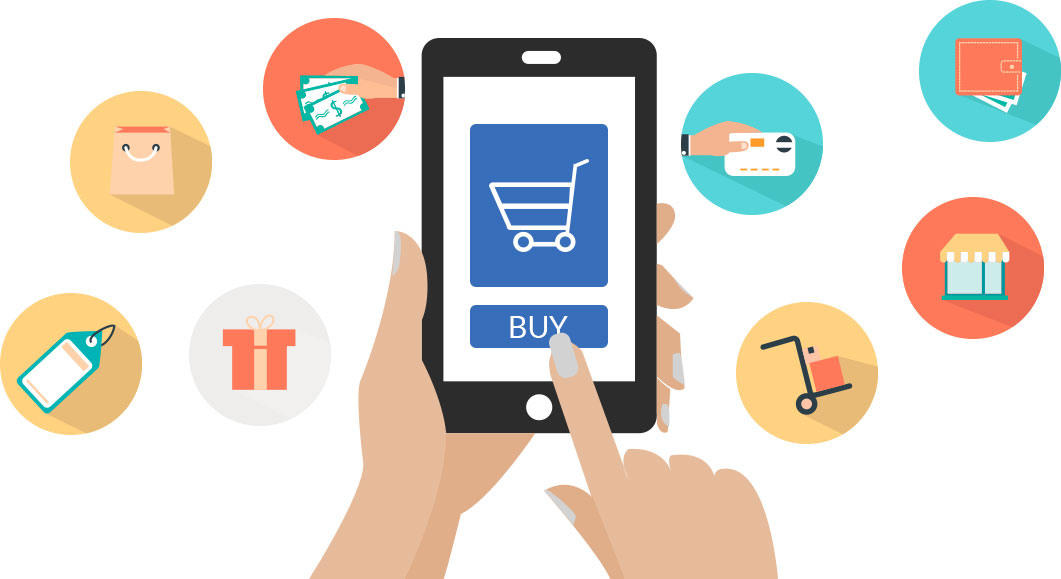
In this blog post we will tell you what is m-commerce, why is important, types of m-commerce, Mobile Commerce’s Benefits (and Drawbacks), Common Advantages of Mobile Commerce, and more. It is important to understand the android user`s market and the way they buy online. As well as why most people prefer -commerce over e-commerce. Also, you will see why it is important for you to have a mobile-friendly app or website for android.
What is it?
Any monetary purchase completed using a mobile computer is referred to as mobile commerce, also known as m-commerce or m-commerce.
It’s a step forward in e-commerce that allows not only Android users to purchase and sell products and services from almost anywhere, all they need is a smartphone or tablet.
It has also sparked the development of new industries and services, as well as aided the expansion of existing ones, such as:
- Money transfers via Android mobile phones.
- Electronic boarding passes and reservations.
- Purchase and distribution of digital content.
- Banking on the go.
- In-app transfers and contactless payments.
- Android programs that are dependent on where you are.
- Vouchers, gift cards, and mobile ads

Why is mobile commerce important?
In 2017, mobile e-commerce sales accounted for 34.5 percent of overall eCommerce sales, and this figure is rising.
Mobile eCommerce revenues are projected to account for 54% of all e-commerce sales by 2021.
Your website – and online shop – may be smartphone-friendly by now, but that doesn’t mean your company is prepared for android users’ mobile shopping.
And, based on the data from marketers, you might be losing a lot of revenue.
According to DynamicYield, “only 12% of customers find mobile online shopping easy.” There’s a lot of space for change there.
More specifically, our smartphone use influences our purchasing choices even though we are in a physical brick-and-mortar shop.
One-third of our purchasing decisions are affected by looking up more details on a commodity on our Android smartphone.
But, before we get too far ahead of ourselves, let us start at the beginning.

Types of m-commerce.
Though m-commerce encompasses a broad range of transactions, they can all be divided into two categories:
-
Shopping on the go.
Essentially the same as eCommerce, but available on a handheld android device. Shopping on the go is now possible thanks to mobile-friendly portals, dedicated applications, and even social media networks.
-
Banking on the go.
Not dissimilar to online banking, but certain transaction forms may be constrained or restricted on mobile devices. Mobile banking is mostly done by a dedicated app, but some banks have begun to experiment with chatbots and texting applications suitable for Android users.

Mobile Commerce’s Benefits (and Drawbacks)
Many ways of doing business have drawbacks, but this can never be seen as a major impediment.
The benefits generally outweigh the drawbacks, and there are ways to avoid many of the risks, especially if you know what they are.
Let us begin with the positive.

Common Advantages of Mobile Commerce
Improved overall Android user service.
Shopping has now become more accessible as a result of e-commerce.
Android Customers now have access to:
- A broader range of materials.
- Pricing is more efficient.
- This without even trying to take their eyes off their screen.
They do have these advantages of mobile commerce, but they no longer need a personal computer.
New Android mobile commerce apps that improve the consumer experience include:
- Augmented reality, with top retailers such as Ikea and Sephora using augmented reality technology to supplement their mobile commerce business.
- Chatbots and messaging applications make it easier for companies to connect with their Android customers by using software and utilities that their customers are already familiar with and enjoy.
- An authentic omnichannel experience.
An omnichannel experience occurs where a shop sells both online and offline, most certainly via various online outlets (i.e. on Amazon, eBay, Facebook, B2B).
We’ve already mentioned the value of listing your product where customers already spend their time. This is being recognized as contextual commerce, a more strategic spin on the broader term omnichannel.

Understanding Android Mobile Payment Alternatives
When it comes to mobile payments for Android users, selecting the best payment system for your eCommerce company is much more critical.
Consumers would like to avoid having to enter credit card and shipping details, so one-click solutions that connect with mobile wallets provide you and your customers with more.
Choosing the correct payment option will result in an instant rise in conversions for certain brands, such as Power Support. Power Support claims a 26 percent rise in orders within two weeks of implementing Amazon Pay for their Android users.
Digital payments are one form of mobile commerce that has developed into its own industry.
Mobile payments now contain the following:
- Mobile accounts, also known as wireless wallets,
- Mobile payments that are contactless
- Mobile payments in a closed-loop
- Transfers of funds
- Point-of-sale on the go (POS)
- Payments to the carrier
Although not all of these are important to e-commerce, understanding what each form of mobile payment entails is beneficial.

Join The Discussion: